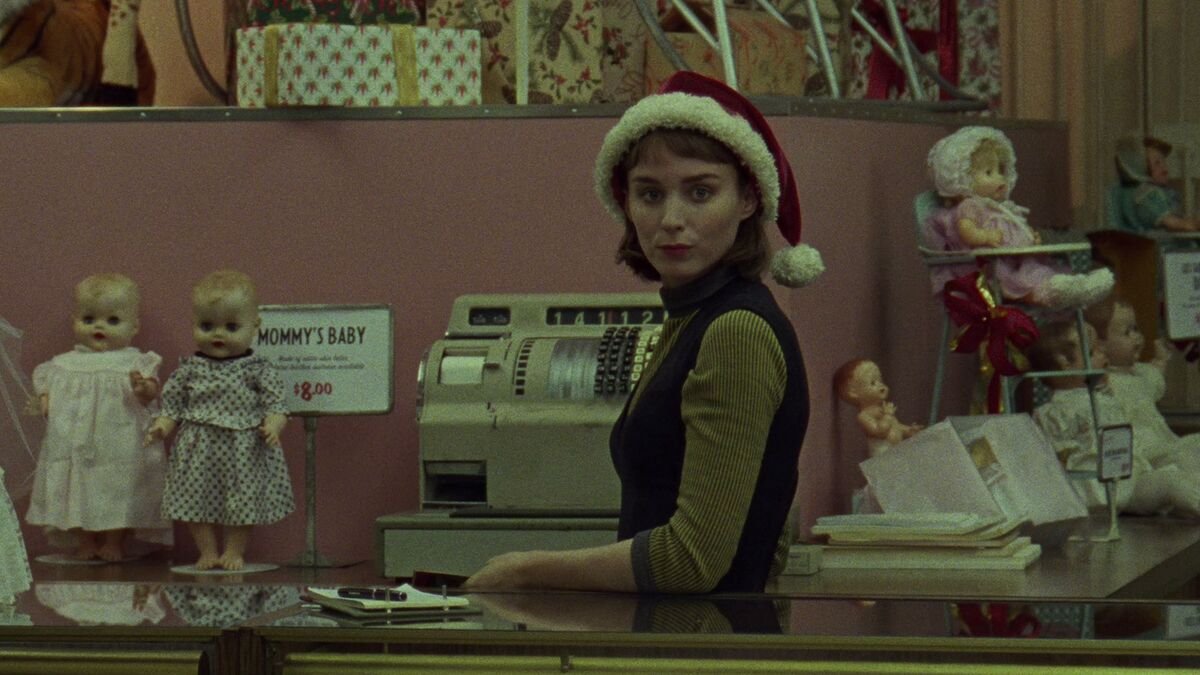Film Diary: The Criminal Mind of Carol
Awaiting her publisher’s word on her debut novel Strangers on a Train (1950),
Patricia Highsmith was struck by inspiration that would soon turn into her cult classic novel The Price of Salt (1952)—originally published under the pseudonym Claire Morgan.
The narrative follows a young shopgirl who falls in love with an elegant housewife.
The book itself is the subject of many crucial studies in regards to its representation of being “in the closet” and the manner in which queer women were victimized by the 1950s heteronormative America.
Its most prominent feature, which has been analyzed time and again, is the book’s layering of criminality into the otherwise innocent love story.
The book itself is the subject of many crucial studies in regards to its representation of being “in the closet” and the manner in which queer women were victimized by the 1950s heteronormative America. Its most prominent feature, which has been analyzed time and again, is the book’s layering of criminality into the otherwise innocent love story.
Indeed, criminality is Highsmith’s signature, haven written novels such as The Talented Mr. Ripley (1955), which also carries themes of homosexuality and criminality. However, what separates The Price of Salt from Highsmith’s other bodies of work is how criminality takes a backseat to the beautiful queer love story, a phenomenon screenwriter Phyllis Nagy and director Todd Haynes brought to the big screen in their adaptation titled Carol (2015).
Known for his keen attention to detail, Haynes—with Phyllis Nagy’s excellent screenplay— uses all the cinematic tools at his disposal to visualize the film’s themes. Highsmith’s signatures, deception and obsession, are less prevalent in her novel–and subsequently Haynes’s film adaptation–than, say, her most famous character Tom Ripley. However, these darker themes are far from absent, and Haynes expertly portrays them in Carol.
By now, I’ve probably watched this film a dozen times (and I plan to make it a baker’s dozen as the holiday season nears), but each time I come away impressed by the cinematography, impressed particularly by director of photography Edward Lachman’s decisions to shoot the protagonists through foggy windows and precipitation.
It’s clear the crew took inspiration from fifties New York photographers, and their execution of this aesthetic is another testament to the filmmakers’ eyes for detail.
The protagonists, Carol Aird (Cate Blanchett) and Therese Belivet (Rooney Mara), are outsiders, looking in on a world that keeps them at a distance. The windows and precipitation through which they are shot are an externalization of their status as outsiders—essentially, criminals in glass cages—serving as barriers between them and the ability to live as a normal couple.
Or, they are barriers between each other, social constraints that delay the start of their relationship. Or even further, barriers between the viewer and the characters’ minds. It’s a nuanced technique that piques the interest of both the characters and the audience, as though the object of your desire is dangled just out of reach, and the farther you reach the more glass obstacles prevent you from grasping it.
The film’s lighting and grain are another excellent detail used to externalize this theme of criminality.
Shot in Super16mm, the filmmakers continue with their allusions to 1950s photography, avoiding the more stylized appearance that digital cameras might produce
Grit and grain overwhelm the screen; this is a clear avoidance of those Sapphic films crafted specifically for the male gaze, with narratives as shallow as their coloring is over the top.Unlike those films, Carol maintains a greenish tint, particularly in those moments when outside perils increase. Like the constant presence of homophobia in 1950s New York, that green tint is ever-present, rarely ceasing.
Its presence is a symbol of the invisible antagonist, the lighting and grain as dim and sinister as an outsider’s perspective of Carol and Therese’s relationship, framing the two women as criminals through the eyes of a homophobic culture.
But socially applied criminality is not the only aspect of Carol that sets it apart from other Sapphic romance films. Its ending, unlike that of other love stories between women, is happy, hopeful, and one of the primary reasons this film has remained among my favorites since its release. The representation of queer women’s relationships ending in tragedy quickly becomes old. We are told there is no happy ending for women who love women, when that couldn’t be further from the truth.
We deserve a happy ending, a loving relationship that perseveres despite its glass barriers. And Carol provides exactly that.





